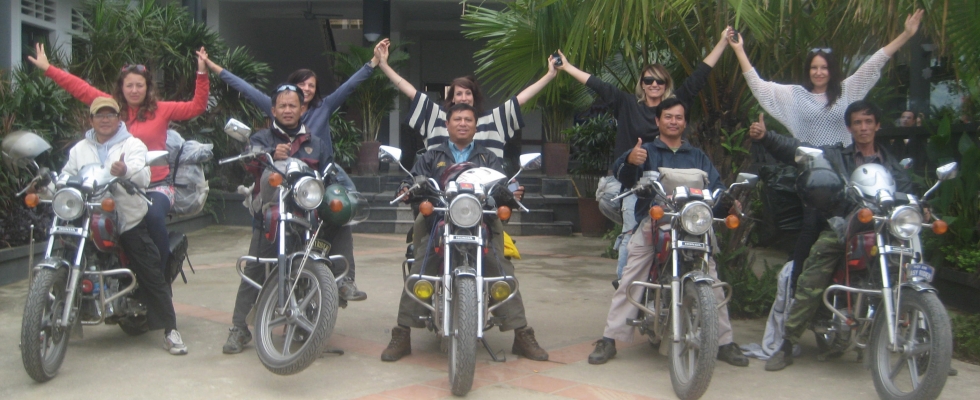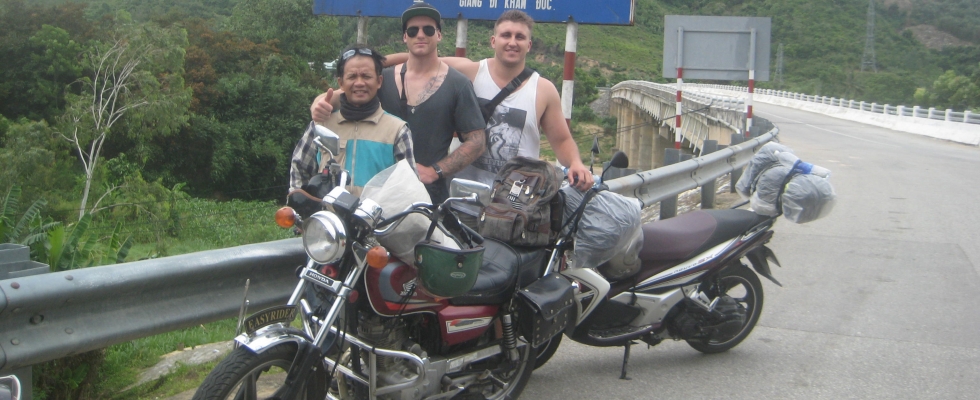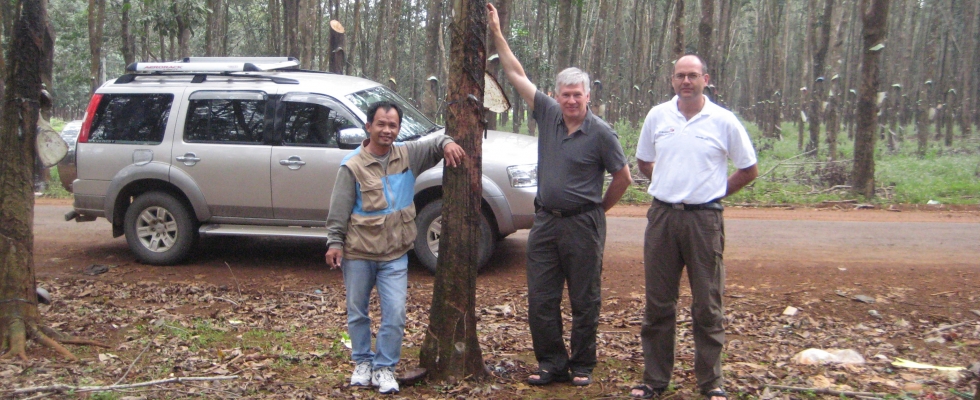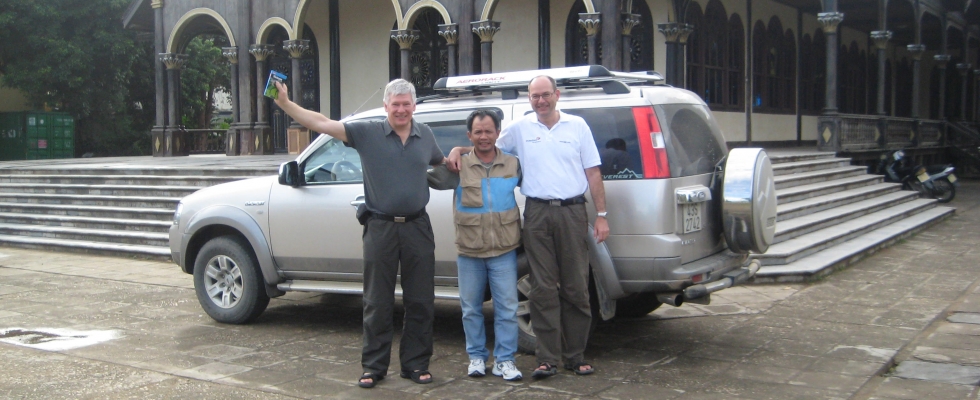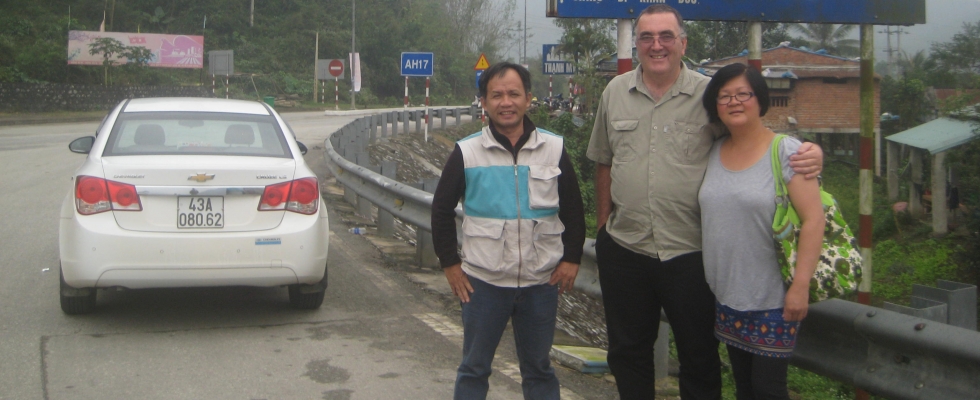A real exploration of Vietnam by motorbike
I was meant to travel Vietnam a lot earlier, right after my Cambodia trip, but a rather spontaneous change of my itinerary forced me to postpone this adventure by more than three months.

Having finally booked my ticket to Hanoi and a rough outline of places to visit in my head, I wasn’t quite sure what to expect. A good amount of fellow travelers told me a lot of good things about the country. Others said that they didn’t like the people and their attitude and that the country has already become too touristy. By that time I had already been to 7 other countries and I was worried that Vietnam would just not be able to fascinate me anymore. Luckily I was very wrong and it turned out to be a great trip, with all kinds of different adventures, beautiful places and memorable encounters with the locals.
For many, arriving in Hanoi is sort of a huge culture shock. It is loud, it is busy and it can be quiet dirty at times. I wasn’t too overwhelmed and actually got to like it pretty much right away. It’s a very dynamic city, the street food is marvelous and, contrary to what I have heard before, I found the locals very friendly. What I found very striking and what accompanied me as we traveled across the country was Vietnam’s ambivalent relation to the past and present. On the one hand the country’s history plays a very important role and sometimes seems to even dominate its society. The colonial times, the Vietnam War but also all of the ancient history – in an abstract way it is something that is ever-present wherever you go. On the other hand you will see a country that is on the move, values change, a new middle-class is emerging and the young people want to advance, leave things behind and move forward. In Hanoi this interesting mix became most evident.
So what about the tourism in Vietnam? It is said that Vietnam is the touristiestSoutheast Asian country just after Thailand. It is true that these days the country gets a huge influx of tourists of all kinds – backpackers as well as all inclusive tours from Europe, the US and China. But there are still ways to dodge the crowds. Our motorbike trip across the mountains of Ha Giang was a perfect example for this. It is a bit out of the way, it takes some time, it might be inconvenient for some but for us the adventure we got in exchange was more than rewarding. Beautiful scenery, authentic hill tribes and yet not a lot of tourists made it one of the best trips of my entire journey.
At the same time, things can become very touristy. Good examples would be the tours of Halong Bay (which I did but did not even cover here), in my opinion one of the most overrated things ever, the still picturesque Hoi An and beach getaways like Nha Trang. I guess it depends what you are after and how you define a great holiday. The good thing about Vietnam is, that it offers a little bit of everything.
One thing is for sure though; Vietnam is the perfect country to be explored bymotorbike. As most of you might know by now, it is my preferred type of transport anyhow. But Vietnam offers a great variety of exciting and interesting motorbike tours. At first my plan was to buy a bike in Hanoi and then drive down all the way toSaigon to sell it. But I soon realized that, in order to travel without time pressure, this endeavor would take more than a month. Some people do it in 2-3 weeks but I think besides the riding and a severe butt pain at the end, a trip like that wouldn’t be that enjoyable. I opted for renting here and there, either for day trips or extended road trips. Looking back at it, this was the best decision and enabled us to make the most out of the 4 weeks we had. I can recommend doing the Ha Giang loop in the North, going from Hue to Hoi An and via Danang and day tours in Dalat or the Mekong Delta. Every one of these trips was worth it and with an average price of about 5-7 USD per day for a bike, it’s affordable as well.
I was positively surprised by the Vietnamese people as I heard a few bad stories before. Everyone was friendly and helpful and we had some great encounters with the locals. They can be very straight forward and they do let it show if they are not content with something. But once you learn how to interpret this, everything is fine. What I found frustrating at times was the fact that you had to haggle for literally everything. Transport, goods and sometimes even a bottle of water. To a certain degree this can be found in all of Southeast Asia and it’s normal but here it was a little too much. It seemed like people perceive Western tourists as moneybags and always try to extract the biggest amount of money as possible. As I later learned, this as well has its roots in former governmental policies and is only slowly changing. At the end of my trip the constant haggling and the abstract feeling of being overcharged just became very tiring.
I finished my journey in the Mekong Delta which somehow felt like coming home or the end of an important part of my trip. I had followed this “Mother of Waters” all the way down from Thailand, through Laos and Cambodia before making it here, where the stream empties into the South China Sea. The river had accompanied me for a long time and it made for some great memories along its banks. As different as the countries are the Mekong flows through, as different are the many faces of the river itself. From a slow and lazy stream to wild and roaring waterfalls and finally branching out into a network of small distributaries – the Mekong represents the many facets of South East Asia and I am sure that one day I will explore its origins in China and Tibet.

Having finally booked my ticket to Hanoi and a rough outline of places to visit in my head, I wasn’t quite sure what to expect. A good amount of fellow travelers told me a lot of good things about the country. Others said that they didn’t like the people and their attitude and that the country has already become too touristy. By that time I had already been to 7 other countries and I was worried that Vietnam would just not be able to fascinate me anymore. Luckily I was very wrong and it turned out to be a great trip, with all kinds of different adventures, beautiful places and memorable encounters with the locals.
For many, arriving in Hanoi is sort of a huge culture shock. It is loud, it is busy and it can be quiet dirty at times. I wasn’t too overwhelmed and actually got to like it pretty much right away. It’s a very dynamic city, the street food is marvelous and, contrary to what I have heard before, I found the locals very friendly. What I found very striking and what accompanied me as we traveled across the country was Vietnam’s ambivalent relation to the past and present. On the one hand the country’s history plays a very important role and sometimes seems to even dominate its society. The colonial times, the Vietnam War but also all of the ancient history – in an abstract way it is something that is ever-present wherever you go. On the other hand you will see a country that is on the move, values change, a new middle-class is emerging and the young people want to advance, leave things behind and move forward. In Hanoi this interesting mix became most evident.
So what about the tourism in Vietnam? It is said that Vietnam is the touristiestSoutheast Asian country just after Thailand. It is true that these days the country gets a huge influx of tourists of all kinds – backpackers as well as all inclusive tours from Europe, the US and China. But there are still ways to dodge the crowds. Our motorbike trip across the mountains of Ha Giang was a perfect example for this. It is a bit out of the way, it takes some time, it might be inconvenient for some but for us the adventure we got in exchange was more than rewarding. Beautiful scenery, authentic hill tribes and yet not a lot of tourists made it one of the best trips of my entire journey.
At the same time, things can become very touristy. Good examples would be the tours of Halong Bay (which I did but did not even cover here), in my opinion one of the most overrated things ever, the still picturesque Hoi An and beach getaways like Nha Trang. I guess it depends what you are after and how you define a great holiday. The good thing about Vietnam is, that it offers a little bit of everything.
One thing is for sure though; Vietnam is the perfect country to be explored bymotorbike. As most of you might know by now, it is my preferred type of transport anyhow. But Vietnam offers a great variety of exciting and interesting motorbike tours. At first my plan was to buy a bike in Hanoi and then drive down all the way toSaigon to sell it. But I soon realized that, in order to travel without time pressure, this endeavor would take more than a month. Some people do it in 2-3 weeks but I think besides the riding and a severe butt pain at the end, a trip like that wouldn’t be that enjoyable. I opted for renting here and there, either for day trips or extended road trips. Looking back at it, this was the best decision and enabled us to make the most out of the 4 weeks we had. I can recommend doing the Ha Giang loop in the North, going from Hue to Hoi An and via Danang and day tours in Dalat or the Mekong Delta. Every one of these trips was worth it and with an average price of about 5-7 USD per day for a bike, it’s affordable as well.
I was positively surprised by the Vietnamese people as I heard a few bad stories before. Everyone was friendly and helpful and we had some great encounters with the locals. They can be very straight forward and they do let it show if they are not content with something. But once you learn how to interpret this, everything is fine. What I found frustrating at times was the fact that you had to haggle for literally everything. Transport, goods and sometimes even a bottle of water. To a certain degree this can be found in all of Southeast Asia and it’s normal but here it was a little too much. It seemed like people perceive Western tourists as moneybags and always try to extract the biggest amount of money as possible. As I later learned, this as well has its roots in former governmental policies and is only slowly changing. At the end of my trip the constant haggling and the abstract feeling of being overcharged just became very tiring.
I finished my journey in the Mekong Delta which somehow felt like coming home or the end of an important part of my trip. I had followed this “Mother of Waters” all the way down from Thailand, through Laos and Cambodia before making it here, where the stream empties into the South China Sea. The river had accompanied me for a long time and it made for some great memories along its banks. As different as the countries are the Mekong flows through, as different are the many faces of the river itself. From a slow and lazy stream to wild and roaring waterfalls and finally branching out into a network of small distributaries – the Mekong represents the many facets of South East Asia and I am sure that one day I will explore its origins in China and Tibet.




